Health Indicators
Erie County shares many of the health challenges across the nation, such as obesity, use of substances like tobacco and alcohol, and chronic diseases such as hypertension. Yet some of those challenges are being successfully addressed, and Erie County residents have good access to affordable care. Several of the analyses and indicators are a reflection of the community's behavioral health, as a proxy for Erie County's attitudes towards healthy living.
- Excessive drinking increases an individual's risk of poor health outcomes, including motor vehicle crashes and unintentional injuries, and is often a contributing factor in child abuse, domestic violence, suicide, and homicide.
- Health insurance is critical to accessing medical care and financial stability. People without insurance may delay necessary care and forgo preventive care altogether, which can lead to more serious and costly medical problems in the future. A major illness or injury can financially ruin an uninsured family.
- Being overweight or obese puts a person at greater risk for a wide variety of serious health problems. Obesity is recognized as a national problem that has grown tremendously over the last three decades, contributing to increases in medical expenditures for treatment of related diseases. Active adults are likely to be healthier than their inactive counterparts, leading to a higher quality of life and lower long-term health costs. Exercise can control weight, improve physical strength and mental health, and reduce risk for cardiovascular disease, Type 2 diabetes, and certain types of cancers.
- Pregnancy and birth rates are another indicator of a community's growth in human capital. Concerning teen pregnancy, it can derail a young woman's life, preventing her from furthering her education or growing up to be self-sufficient. Babies born to teen mothers are at higher risk of having a low birth weight and of infant mortality compared to babies born to older mothers. They are also at risk of lower cognitive development, poor educational outcomes and living in poverty. Smoking during pregnancy can cause premature births or low birth weight, which presents an increased risk for illness and prolonged medical treatment. Smoking during pregnancy also is a risk factor for sudden infant death syndrome. Early, high-quality prenatal care is critical to reducing risks for complications of pregnancy or birth and improving birth outcomes.
- Death rates are a measure of the overall health of a community, particularly since some of the most common causes of death, such as heart disease, can be prevented or mitigated through lifestyle changes, prevention efforts, early intervention, and better access to quality health care.
- Smoking is a leading cause of preventable death, causing more than 480,000 deaths per year in the U.S. and leading to higher long-term health costs. Smoking causes cancer, heart disease, stroke, and chronic obstructive pulmonary disease both among smokers and people exposed to secondhand smoke. Smokeless tobacco is the leading cause of oral cancer and increases likelihood of other oral disease.
The following are the EVS key indicators for Erie's Health:
EXPLORE THE DATA IN MORE DETAIL
Click on any of the previews below to access the topic pages for each data cetagory
Alcohol Consumption Insights Healthcare & Accessibility Insights
Maternity & Childbirth Insights Mortality Insights
Obesity & Physical Activity Insights Smoking & Tobacco Use Insights

